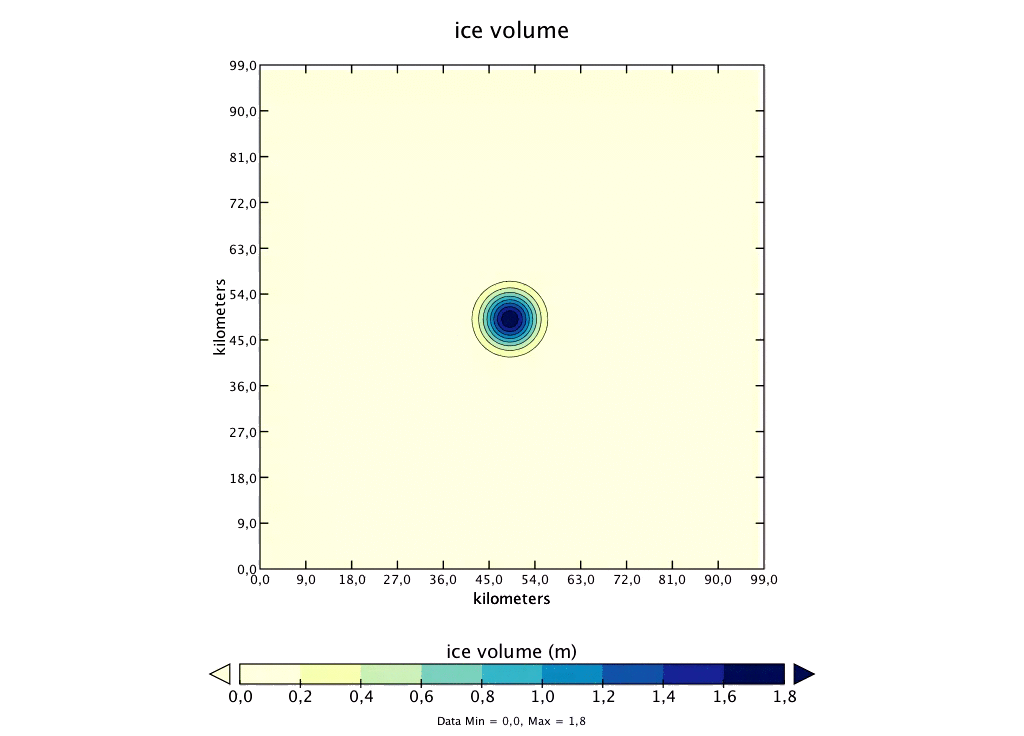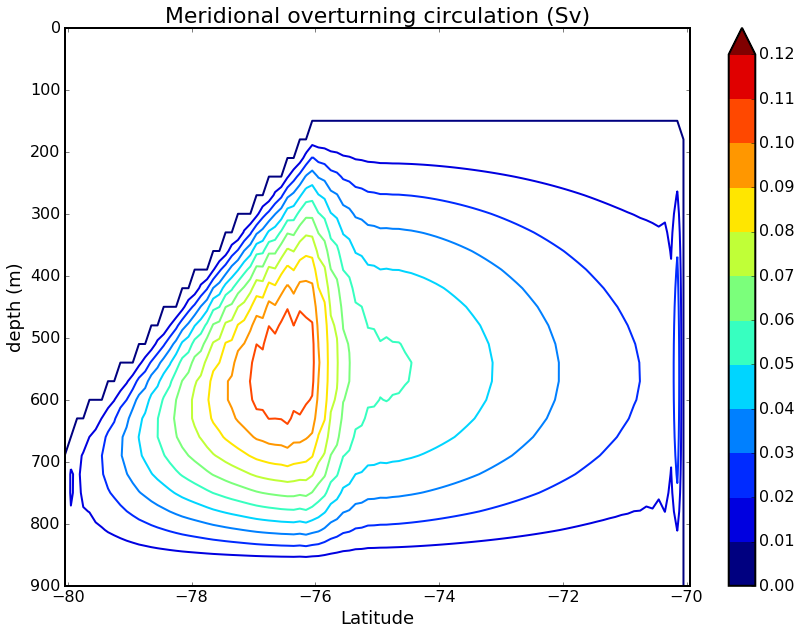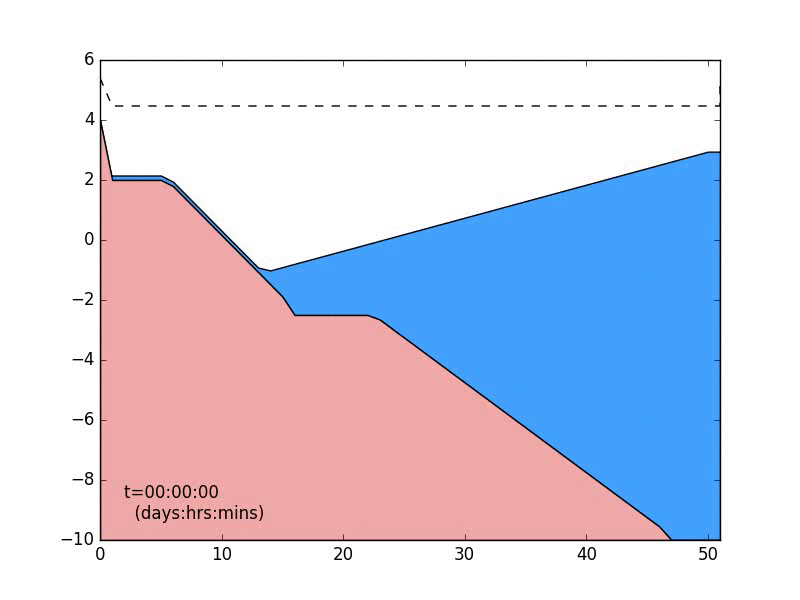Explore the test cases¶
Installation¶
Download¶
./tests root directory with$ git clone http://github.com/NEMO-ocean/NEMO-examples
Compilation¶
The compilation of the test cases is very similar to the manner the reference configurations are compiled. If you are not familiar on how to compile NEMO, it is first recomended to read the instructions.
-r option,
test cases can be compiled by the use of makenemo with -a option.$ ./makenemo -n 'WAD2' -a 'WAD' -m 'my_arch' -j '4'
Run and analysis¶
There no requirement of specific input file for the test_cases presented here. The XIOS xml input files and namelist are already setup correctly. For detailed description and Jupyter notebook, the reader is directed on the NEMO test cases repository
The description below is a brief advertisement of some test cases.
List of test cases¶
BENCH¶
ICE_AGRIF¶
README for details)VORTEX¶
This test case illustrates the propagation of an anticyclonic eddy over a Beta plan and a flat bottom. It is implemented here with an online refined subdomain (1:3) out of which the vortex propagates. It serves as a benchmark for quantitative estimates of nesting errors as in [T1], [T2] or [T3].
The animation (sea level anomaly in meters) illustrates with two 1:2 successively nested grids how the vortex smoothly propagates out of the refined grids.
ISOMIP¶
LOCK_EXCHANGE¶
OVERFLOW¶
WAD¶
CANAL¶
East-west periodic canal of variable size with several initial states and associated geostrophic currents (zonal jets or vortex).
ICE_ADV2D¶
ICE_ADV1D¶
References
- T1
Laurent Debreu, Patrick Marchesiello, Pierrick Penven, and Gildas Cambon. Two-way nesting in split-explicit ocean models: algorithms, implementation and validation. Ocean Modelling, 49-50:1 – 21, 2012. doi:10.1016/j.ocemod.2012.03.003.
- T2
Pierrick Penven, Laurent Debreu, Patrick Marchesiello, and James C. McWilliams. Evaluation and application of the roms 1-way embedding procedure to the central california upwelling system. Ocean Modelling, 12(1):157 – 187, 2006. doi:10.1016/j.ocemod.2005.05.002.
- T3
M. A. Spall and W. R. Holland. A nested primitive equation model for oceanic applications. Journal of Physical Oceanography, 21(2):205–220, 1991. doi:10.1175/1520-0485(1991)021<0205:ANPEMF>2.0.CO;2.
- T4
M. Losch. Modeling ice shelf cavities in a z coordinate ocean general circulation model. Journal of Geophysical Research: Oceans, 113(C8):, 2008. URL: https://agupubs.onlinelibrary.wiley.com/doi/abs/10.1029/2007JC004368, arXiv:https://agupubs.onlinelibrary.wiley.com/doi/pdf/10.1029/2007JC004368, doi:10.1029/2007JC004368.
- T5
P. Mathiot, A. Jenkins, C. Harris, and G. Madec. Explicit representation and parametrised impacts of under ice shelf seas in the $z^\ast $ coordinate ocean model nemo 3.6. Geoscientific Model Development, 10(7):2849–2874, 2017. URL: https://www.geosci-model-dev.net/10/2849/2017/, doi:10.5194/gmd-10-2849-2017.
- T6(1,2)
D. B. Haidvogel and A. Beckmann. Numerical ocean circulation modeling. Imperial College Press, London, 1999.
- T7
Hans Burchard and Karsten Bolding. GETM: A General Estuarine Transport Model; Scientific Documentation. European Commission, Joint Research Centre, Institute for Environment and Sustainability, 2002.
- T8(1,2)
Mehmet Ilicak, Alistair J. Adcroft, Stephen M. Griffies, and Robert W. Hallberg. Spurious dianeutral mixing and the role of momentum closure. Ocean Modelling, 45-46:37 – 58, 2012. doi:10.1016/j.ocemod.2011.10.003.
- T9
Christoph Schär and Piotr K. Smolarkiewicz. A synchronous and iterative flux-correction formalism for coupled transport equations. Journal of Computational Physics, 128(1):101 – 120, 1996. URL: http://www.sciencedirect.com/science/article/pii/S0021999196901989, doi:https://doi.org/10.1006/jcph.1996.0198.
- T10
William H. Lipscomb and Elizabeth C. Hunke. Modeling sea ice transport using incremental remapping. Monthly Weather Review, 132(6):1341–1354, 2004. URL: https://doi.org/10.1175/1520-0493(2004)132<1341:MSITUI>2.0.CO;2, arXiv:https://doi.org/10.1175/1520-0493(2004)132<1341:MSITUI>2.0.CO;2, doi:10.1175/1520-0493(2004)132<1341:MSITUI>2.0.CO;2.






